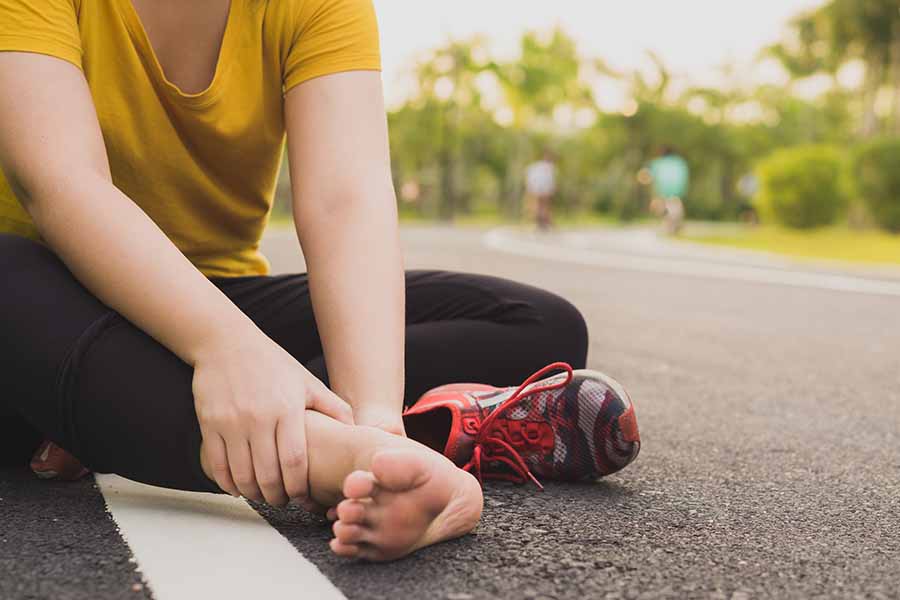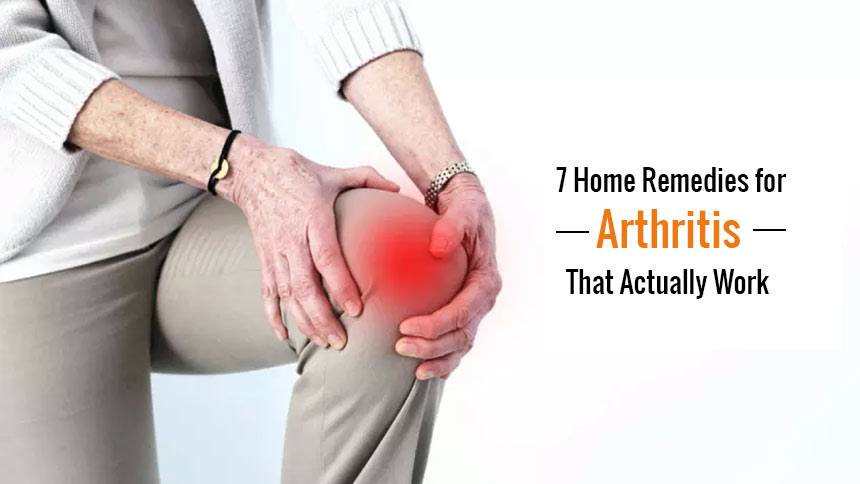Why Is My Ankle Sprain Not Getting Better?
25 October, 2016
Dr.G K Sudhakar Reddy
Orthopaedics.
View Full profile
Most ankle injuries get better with rest, ice packs, painkillers and physiotherapy with no long-term problems. However, in about 5-10% of the pain and instability may continue beyond the usual healing time of 6 to 12 weeks. The ligaments may fail to heal properly and become weak, or there may be damage to the joint itself or some other structure nearby. Ankle instability is when there is a tendency for the ankle to “give way”, often with minor stresses making one prone to repeated ankle sprains. This is more commonly due to damage to the proprioceptive nerves than the actual weakness of the ligaments. These are small nerve endings in the joint and ligaments which tell the brain where the ankle is and what position it is in. If these nerve endings are not working properly, the brain does not get reliable information and the muscles around the ankle may not work together properly.

How is the problem diagnosed?
It is important to be examined by a specialist to look for any signs that you have some other problem around your ankle, such as damage to the joint surface. Ankle examination will reveal if the ligaments are lax. Investigations may be required like special stress X-ray views, MRI scans to look for ligament damage and other causes of pain
What can be done about ankle instability?
The first treatment is a physiotherapy programme to re-train the proprioceptive nerves which are not working properly, by doing various exercises and activities. Exercises are also shown to stretch and strengthening the muscles around the ankle. A moulded insole may be advised for your shoe to reduce extra stress on the ankle ligaments. An ankle brace may help to tighten up or replace the ligaments. Many people will find their ankles much more stable and comfortable with physiotherapy.
Will I need an operation?
If problems continue like pain and instability despite other measures an operation might be required. A keyhole surgery (Arthroscopy) may be required to smoothen scar tissue, remove loose joint pieces and assess ligament status. An operation to reconstruct the ankle ligaments may be needed if tests show that the ligaments are weak/lax.
Consult an Orthopaedic/Sports specialist surgeon for further advice.
Treatment Options For Joint Pains From Arthritis
26 September, 2015
Dr.G K Sudhakar Reddy
Orthopaedics.
View Full profile

Lifestyle changes
If one is overweight, try to lose weight by doing more physical activity and eating a healthier diet. Regular exercise keeps you active and mobile and builds up muscle, thereby strengthening the joints and can improve symptoms.
Pain Killers
Painkillers help with pain and stiffness but they don’t affect arthritis itself and won’t repair the damage to your joint. Creams and gels can be applied directly onto painful joints. They are well tolerated because very little is absorbed into your bloodstream.
Nutritional Supplements
Glucosamine and chondroitin are nutritional supplements. Studies in animals have found that glucosamine can both delay the breakdown of and repair damaged cartilage. However, there is insufficient evidence to support the use of glucosamine in humans and one can expect only a mild-to-moderate reduction in pain
Joint injections
If pain from osteoarthritis is severe joint steroid injections are injected into the joints that can reduce swelling and pain. The injections can start working within a day or so and may improve pain for several weeks or months.
Hyaluronic acid injections, which help to lubricate your knee joint, are sometimes given but recent evidence that it works isn’t convincing.
Surgery
May be recommended if you have severe pain and/or mobility problems.
Arthroscopy
If one has frequent painful locking/stiffening episodes, especially in the knee joint, an operation to wash out loose fragments of bone and other tissue as joint can be performed by a minimally invasive keyhole procedure called Arthroscopy.
Joint replacement surgery
Joint replacement therapy is most commonly carried out to replace hip and knee joints. It involves replacing a damaged, worn or diseased joint with an artificial joint made of special plastics and metal.
For most people, a replacement knee will last for at least 15 to 20 years, especially if the new knee is cared for properly and not put under too much strain.
There are two main types of surgery, depending on the severity of arthritis:
• total knee/hip replacement – both sides of your knee/hip joint are replaced
• partial (half) knee replacement (PKR) – only one side of your knee joint is replaced in a smaller operation where more of the undamaged knee is preserved with a shorter hospital stay and recovery period.
Other surgical options for arthritis
Arthrodesis or Joint fusion
If hip or knee replacement is not suitable, especially in young people who do heavy manual work, one can consider an operation known as arthrodesis, which fuses your joint in a permanent position. This means that your joint will be stronger and much less painful, although you will no longer be able to move it.
Osteotomy
In young, active people in whom a knee joint replacement would fail due to excessive use one can consider an operation called an osteotomy. This involves adding or removing a small section of bone either above or below your knee joint. This helps realign your knee so your weight is no longer focused on the damaged part of your knee. An osteotomy can relieve your symptoms of osteoarthritis, although you may still need knee replacement surgery eventually as you grow old.Knee ReplacementArthritis
Orthopaedic Problems and Relation With Obesity
26 September, 2015
Orthopaedics.
View Full profile

Obesity or being overweight is now recognized as a serious cause of ill health. Obesity is associated with significant orthopaedic problems and losing weight was found to have positive effects on relief of symptoms from all these conditions.
1. Osteoarthritis – in Knee, hip and hand joints
2. Osteoporosis
3. Low Back Pain
4. Tendonitis
5. Nerve compressions
6. Trochanteric Bursitis
7. Plantar Fasciitis
8. Gout
9. Fibromyalgia
Osteoarthritis
Osteoarthritis is a common disabling condition which affects normal daily life activities and is caused by obesity. Other lifestyle factors are also associated with osteoarthritides like level of joint activity, lack of exercise, muscle weakness, and joint injury. Of these muscle weakness is common in obesity. Obesity triggers osteoarthritis by transmitting excess weight to the weight-bearing joints like the knee and the hip.
Knee Osteoarthritis
Knee Osteoarthritis is caused due to the excessive weight burden on the knees in an obese and overweight person. This is the most common arthritis especially, in the Indian subcontinent.
While walking an individual exerts 3 to 6 times the pressure of the bodyweight on the weight-bearing knee joint, which means in an obese with excess body weight, larger forces are exerted, which lead to a higher risk of deterioration of cartilage.
In addition, there are excessive fat tissues that produce hormones and other factors that affect the joint lining and cause inflammation of the joints giving rise to joint pathology.
Hip osteoarthritis
The force transmitted across the hip is 3 times that of body weight. Hip osteoarthritis is caused by factors such as joint injury, increasing age and being overweight.
Hand osteoarthritis
Obese people also have a higher risk of having hand osteoarthritis due to the metabolic effect produced by fat tissue.
Osteoporosis
Osteoporosis is a progressive bone condition that is characterized by a decrease in bone mass and density, and reduced Bone Mineral Density (BMD) which can lead to an increased risk of fracture. Recent research suggests that obesity may accelerate bone loss. It is the amount of muscle mass which is seen in an active person, which accounts for bone strengthening effects and not due to the fat seen in a heavy person.
Low back pain
Low back pain from degenerative disc disease of the lumbar spine is one of the most disabling conditions in the community and overweight and obesity have the strongest association with seeking care for low back pain.
Other conditions
Obesity is an also a risk factor for:
* Upper extremity tendonitis (inflammation of tendons) causing pain in the shoulder, elbow, wrist
* Nerve compressions in wrist and elbow causing painful hand symptoms and weakness.
* Plantar fasciitis which is a common cause of heel pain.
* Trochanteric bursitis, causes frequent lateral hip pain in elderly and middle-aged individuals.
* Gout which is characterized by sudden, severe attacks of pain, redness and tenderness in joints, often the joint at the base of the big toe. It is formed by the deposition of monosodium urate crystals and can also present as kidney stones, and soft tissue lumps.
* Fibromyalgia is a complex disorder resulting in pain, disturbed sleep and altered mood. Hip PainObesity
people in whom a knee joint replacement would fail due to excessive use one can consider an operation called an osteotomy. This involves adding or removing a small section of bone either above or below your knee joint. This helps realign your knee so your weight is no longer focused on the damaged part of your knee. An osteotomy can relieve your symptoms of osteoarthritis, although you may still need knee replacement surgery eventually as you grow old. Knee Replacement Arthritis
Five Simple Remedies After Sustaining A Sprain
26 September, 2015
Orthopaedics.
View Full profile
- Rest the injured part. Avoid putting excess weight on it. You may need to use crutches if the lower limb is injured.
- Apply Ice to the injured part to reduce pain and swelling. Do it for 20-30 minutes every three to four hours for two to three days, or until the pain and swelling is gone.
- Compress the injured area by using an elastic compression bandage to control swelling.
- Elevate the injured part (eg over a pillow) when you’re sitting or lying down.
- Take simple anti-inflammatory painkillers like ibuprofen for a short duration to help with pain and swelling. However, these drugs can have side effects and should only be used occasionally, unless your doctor specifically says otherwise.
